#LGOV
Photo

Central Bankers Stick To The Script At Jackson Hole
https://www.invesco.com/us/en/insights/central-bank-jackson-hole-monetary-policy.html
#TLT#TLH#EDV#SPTL#ZROZ#VGLT#LGOV#SCHQ#TFJL#TBJL#GOVZ#TBT#TMV#IEF#SHY#TBF#TMF#PST#TTT#IEI#BIL#TYO#UBT#UST#UTWO#VGSH#SHV#VGIT#GOVT#SCHO
0 notes
Text
Saints&Reading: Wednesday, September 20, 2023
september 7_september 20
Forfeast of the nativity of the Theotokos

VENERABLE MACARIUS FROM OPTINA (1860)
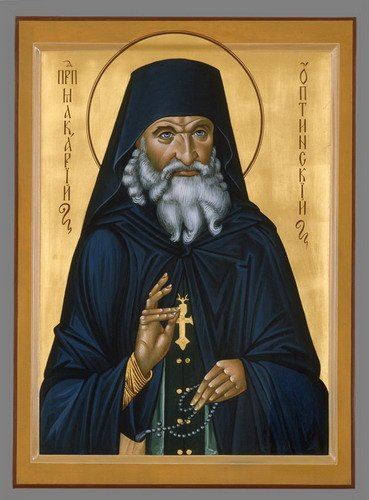
The future Saint Macarius was born in 1788 into the noble Ivanov family, and was baptized with the name Michael in honor of Saint Michael of Tver (November 22). His parents Nicholas and Elizabeth had an estate in the village of Shepyatino in the Dimitrov district in the Orel province. They also owned property in other provinces, including the village of Zhelezniki in Orel Province where they lived. The Ivanovs moved to Moscow in 1794 so Elizabeth could receive medical treatment for tuberculosis.
Michael’s beloved mother died on January 21, 1797, and was buried in the Saint Andronicus monastery. The nine-year-old Michael moved to the village of Karachev to live with his sister Daria and her husband Simeon Peredelsky, who had been elected to the District Court of Karachev. Michael received his primary education there in the local parish school.
Around 1801, Michael and his two brothers moved into the house of his aunt Anna M. Verevkina, where they were educated along with her own son. In 1802, when he was fourteen, Michael and his brother Alexis were hired as assistant bookkeepers in the District Treasury of Lgov. Although the job was difficult, Michael carried out his duties with precision and care that he attracted the attention of the provincial authorities.
In 1805 Michael was appointed as head of the Financial Board (Treasury) in Kursk. When he was not working, he liked to spend his time reading or playing the violin. Michael’s father died on March 17, 1806 after a long illness, and was buried near the parish church at Turischev.
Michael visited the Ploschansk Hermitage, twenty-four miles from his family’s estate in Schepyatino, in October of 1810. From there he wrote to his brothers saying that he was leaving the estate to them, for he intended to remain at the hermitage. His only condition was that they donate 1000 rubles to build a stone church at Turischev where their father was buried.
Those closest to Michael never knew whether his visit to Ploschansk was accidental or premeditated. He did seem inclined to the monastic life, but perhaps he did not make a final decision to become a monk until he had observed the monastic life at Ploschansk.
Michael entered the Ploschansk Hermitage of the Theotokos at the age of twenty-two. It had no large buildings, no great wealth, and was far from populated areas. Perhaps he was attracted by the unpretentiously humble circumstances of the place. There were fifty monks at the Hermitage, led by Hieromonk Joannicus.
Michael was enrolled as a novice a month after arriving at Ploschansk, and was tonsured as a rassophore on December 24, 1810 with the name Melchizedek. He did not mind the privation and hard work at the Hermitage, but there were no Elders there capable of offering spiritual guidance.
Hearing that Elders of lofty spiritual life were living in the forests of Bryansk, and in the monasteries of the Orel and Kursk dioceses, Father Melchizedek longed to meet them and profit from their teaching. However, the opportunity did not arise for some time.
In 1814, he went on pilgrimage to Kiev, where he venerated the relics of various saints. On the way back, he met some experienced Elders and was able to converse with them.
Father Paul, who came from a family of Rostov merchants, and who was tonsured on Mount Athos, became the new Superior of Ploschansk in 1815. He noticed Father Melchizedek’s zeal for the monastic life, and for fulfilling his obediences. On March 7, 1815 Father Paul tonsured him as a monk with the new name Macarius. A few days later, on March 12, Bishop Dositheus of Orel and Sevsk ordained Father Macarius as a hierodeacon.
Schemamonk Athanasius (Zakharov), a disciple of Saint Paisius Velichkovsky (November 15) was visiting Ploschansk in 1815. He had lived at White Bluff Monastery and Florischev Hermitage in the Vladimir Province. While at Ploschansk, Father Athanasius fell off a bench and dislocated a joint in his leg. He went to Cholnsk Monastery in 1816 and partially recovered, but he could no longer walk without a crutch. In 1817 he returned to Ploschansk, and Father Macarius moved to his cell to take care of him.
Elder Athanasius had a great influence on the spiritual development of Father Macarius, who revered him as his Father and teacher. For seven years he had lived in the Neamts Monastery, where he was tonsured by Saint Paisius Velichkovsky. Father Athanasius finished the course of his earthly life on October 17, 1825, and died in the arms of Father Macarius. He had lived at Ploschansk for ten years, and Father Macarius derived much benefit from his Elder’s example.
Father Athanasius had copies of the translations of the ascetical Fathers made by Saint Paisius, and he himself had translated the Life of Saint Gregory of Sinai, the Catechetical Homilies of Saint Theodore the Studite, the homilies of Saint Gregory Palamas, and many other profitable writings. Not only did Father Macarius read and copy these translations and absorb the wisdom contained in them, he later published them for the benefit of others.
Father Macarius was ordained to the holy priesthood by Bishop Dositheus of Orel and Sevsk on May 27, 1817. When Igumen Paul retired to the bishop’s residence at Kaluga in 1818, he was replaced by Hieromonk Seraphim, a disciple of Father Basil (Kishkin), the Superior of White Bluff Hermitage. Father Seraphim brought good order to Ploschansk, instructing the monks in the spiritual life.
With Father Seraphim’s blessing, Father Macarius made a pilgrimage to Kiev in 1819 with Hierodeacon Palladius. There they met Archimandrite Anthony, who later became Archbishop of Voronezh and Zadonsk. On the way back to Ploschansk, the two visited Glinsk Hermitage. Father Macarius became acquainted with Hierodeacon Samuel, who was experienced in mental prayer. Since Father Athanasius had never spoken to him of this activity, Father Macarius was gratified to meet someone who could speak about it from personal experience.
In 1824, Father Macarius went to Rostov to venerate the relics of Saint Demetrius (September 21 and October 28). On that same trip he visited Optina Monastery and its new Skete for the first time.
Two of Father Macarius’s spiritual guides passed away within a short time: Elder Athanasius in 1825, and Igumen Seraphim in 1826. Hieromonk Marcellinus was appointed as Superior of Ploschansk in addition to his duties as Bishop Gabriel’s steward. He continued to live at Orel for two years, while the Ploschansk Hermitage was administered by Father Anatole, the treasurer.
Father Macarius was made dean of the Hermitage on June 10, 1826. In January of 1827, he was assigned as confessor at the Holy Trinity Convent of Sevsk. This began his period of spiritual direction and spiritual correspondence which lasted until his death. He did not assume such a role on his own, but only in obedience to the will of the bishop.
In 1828 Father Leonid (Nagolkin) came to Ploschansk from the Saint Alexander of Svir Monastery with several disciples. Father Macarius thought that the arrival of Father Leonid was the answer to his prayers, for Father Leonid was a man of great spiritual wisdom. This holy Elder, who had struggled against many visible and invisible foes, was able to give useful advice to those who were experiencing temptations. He understood from personal experience that those who wish to serve the Lord must prepare their souls for temptation (Sirach 2:1). He agreed to Father Macarius’s repeated requests to accept him as a spiritual son and disciple. When Father Leonid moved to Optina in 1829, Father Macarius kept in touch with him through letters.
Father Macarius visited Optina and Father Leonid in 1831 on his way to Petersburg, where Bishop Νikόdēmos of Orel was serving his term in the Holy Synod. He appointed Father Macarius as treasurer and steward, much to the latter’s chagrin. Father Macarius did not care for the bustle of the city, and longed to return to the tranquility of the monastery, yet he remained in his position out of obedience to the bishop.
After serving for almost a year in Petersburg, Father Macarius returned to Ploschansk Hermitage. On the way back, he visited Father Leonid again at Optina. He also submitted a request to Father Moses to be admitted to the Skete at Optina as soon as this might be arranged. The desired transfer from Ploschansk to Optina did not take place until January 14, 1834.
Father Macarius had lived at Ploschansk for twenty-three years, and always retained a certain fondness for the place for the rest of his life. Father Macarius finally arrived at Optina on February 5, 1834.
At the age of forty-six, Father Macarius placed himself at the feet of Father Leonid, humbling himself and demonstrating complete obedience. At first, he helped the Elder with his correspondence, but later his responsibilities increased. In October of 1836 he was appointed as confessor for the monastery. After Father Anthony was assigned to Saint Nicholas Monastery in Maloyaroslavets as abbot, Father Macarius succeeded him as Superior of the Skete on December 1, 1839. Father Macarius’s relationship with Father Leonid did not change because of his new position. He never did anything without consulting Father Leonid, and always attributed any success he achieved to the blessing and prayers of his Elder.
Father Macarius remained humble and obedient to Father Leonid until the Elder’s death on October 11, 1841. Even when Father Leonid was transferred from the Skete to the Monastery in 1836, Father Macarius visited him every day to ask his advice on various matters.
During his final illness, Father Leonid told his spiritual children to go to Father Macarius for spiritual counsel. Seeing in Father Macarius the same spiritual gifts possessed by Father Leonid, people recommended him to their friends and acquaintances. As a result, the number of Father Macarius’s disciples grew larger every year. He was also assigned as instructor of the new novices, and of those who were about to be tonsured.

Father Macarius received visitors from morning until night, and also kept up an extensive spiritual correspondence. Sometimes he was exhausted by the crowds of people, and by the number of letters he had to write. His humility and love for people who were afflicted in body and in spirit would not permit him to curtail his activities, however.
Father Macarius had always loved reading and studying patristic literature. At Ploschansk, he had copied many translations done by Saint Paisius Velichkovsky which were in the possession of Schemamonk Athanasius. His knowledge and understanding of the Fathers increased at Optina under the guidance of Father Leonid, a disciple of Father Theodore of Svir, who was himself a disciple of Saint Paisius. Father Anthony, abbot of the Skete and Father Moses, abbot of the Monastery, both encouraged the study of patristic books. Conditions for the publication of these manuscripts, translated and corrected by Saint Paisius, were quite favorable, for Optina possessed the best copies of these writings.
In 1845, Ivan V. Kireyevsky, the editor of The Muscovite, asked Father Macarius to write a biography of Saint Paisius for his magazine. In 1846, Father Macarius was visiting the Kireyevskys at their estate, and the discussion turned to the lack of spiritual books offering instruction in the Christian life. Natalia Kireyevsky, the spiritual daughter of Father Macarius since 1838, happened to have some manuscripts of ascetical literature. They both asked Father Macarius, “What prevents us from offering these spiritual treasures to the world?”
At the beginning of 1847 a biography of Father Pasius Velichkovsky, with extracts from his writings, was published. Over the course of time, sixteen books of patristic literature were published under the Elder’s supervision, including works by Saint Nilus of Sora, Saints Barsanuphius and John, Saint Simeon the New Theologian, and Saint Isaac of Syria.
In 1853, Father Macarius resigned as Superior of the Skete of Saint John the Baptist, and was succeeded by Father Paphnutius. This took place on November 30, exactly fourteen years from the time Father Macarius had first assumed the office.
In 1859, one of Father Macarius’s spiritual daughters, was at the point of death. Maria asked Father Macarius to pray that God would spare her life so that she could see her son again. The Elder told her that she would recover, and that they would both die around the same time. The old woman told her friends of this prediction, saying, “Beware my death, for it is connected with the Elder’s death.” Maria died on August 23, 1860 in the presence of Father Macarius and Father Leonid Kavelin.
On August 26, the Elder became ill with ischuria. A doctor who happened to be at Optina saw him and treated him with drugs. Father Macarius felt worse that evening, and so they sent for a certain nobleman’s personal physician. That doctor was not available, so Father Kavelin went to another doctor to ask for advice. Father Macarius showed no improvement, so he received Holy Unction and the life-giving Mysteries of Christ. On September 2, he received two gifts which delighted him. One was an enamel icon of the Vladimir Mother of God from Metropolitan Philaret of Moscow, which he wore on his breast. The other was a cross containing a relic of the Cross of Christ.
The Elder felt weaker on September 4, and received Holy Communion after Vespers. During his illness the brethren who cared for him read the daily rule of prayer for him at the proper times. He also asked them to read certain portions of the writings of the holy Fathers.
On September 5, Father Macarius was moved from his small bedroom into the larger reception room where the air was fresher. During the night the ninety-year-old Schemamonk Hilarion reposed, and the church bell was rung three times according to the custom of the Monastery, indicating that one of the brethren had departed. Many of Father Macarius’s disciples and some visitors in the guesthouse thought that the bell tolled for him. They became alarmed until it was announced that Father Hilarion had passed away.
The Elder experienced shortness of breath on September 6. He received Communion, and was visited by two doctors, but there was nothing they could do for him. Father Macarius felt worse that evening, and received Holy Communion a second time around 8:00 P.M. Around midnight he talked with his confessor for about half an hour, receiving absolution and forgiveness of his sins.
Father Macarius asked to have the prayer for the dying read, which he heard while sitting in a chair. The Canon and Akathist to the Most Holy Theotokos were also read, and the Canon to the Sweetest Lord Jesus Christ was read during Matins. During these readings it appeared that the Elder’s sufferings were alleviated.
During the night Father Macarius asked to be moved several times from the bed to the chair. He was calm and peaceful, and thanked those around him for caring for him. At 6:00 the next morning he received Holy Communion for the last time.
At 7:00 on the morning of September 7, 1860, Father Macarius departed to the Lord while the Ninth Ode of the Canon for the Departure of the Soul from the Body was being read. Two years before his death, he was secretly tonsured into the Great Schema. Therefore, a schema which had been blessed on the Lord’s Sepulchre was placed on his body. Several Panikhidas were offered for his soul throughout the day.
Father Macarius was laid to rest on September 10, in a grave prepared for him opposite the altar of the Saint Nicholas chapel in the main church. He was buried to the right of the grave of Father Leonid, his friend and fellow ascetic.
The Moscow Patriarchate authorized local veneration of the Optina Elders on June 13,1996. The work of uncovering the relics of Saints Leonid, Macarius, Hilarion, Ambrose, Anatole I, Barsanuphius and Anatole II began on June 24/July 7, 1998 and was concluded the next day. However, because of the church Feasts (Nativity of Saint John the Baptist, etc.) associated with the actual dates of the uncovering of the relics, Patriarch Alexey II designated June 27/July 10 as the date for commemorating this event. The relics of the holy Elders now rest in the new church of the Vladimir Icon of the Mother of God.
The Optina Elders were glorified by the Moscow Patriarchate for universal veneration on August 7, 2000.
VENERABLE CLODOALD ( Cloud) (Clodoald), ABBOT FOUNDER OF NOGENT NOW ST CLOUD NEAR PARIS (Gaul_560).

Saint Cloud, is the first of the princes of royal blood whom the Church honored with public worship. He was the son of Clodomir, king of Orléans, and grandson of the great Clovis and Saint Clotilde. He was born in 524 and was only three years old when his father was killed in Burgundy. He had two brothers, Thibaud and Gonthaire, whom Saint Clotilde took into her palace to raise them Christianly. This pious princess, who loved them very much, inspired them from the most tender age with a love of virtue and prepared them to one day brilliantly uphold the rank to which their birth called them. Still, she did not know that the tomb awaited them in the place of their father's throne because Childebert, king of Paris, and Clotaire, king of Soissons, uncles of the three young princes, driven by a detestable ambition, and, under the pretext of accustoming them to living at court, they called them to Paris and massacred the two eldest to seize their inheritance.
Cloud escaped this cruel massacre; Providence allowed him to avoid this cowardly perfidy; Clotilde hid and saved him from a disastrous death. The young prince thanked God for such miraculous preservation, and from that moment, he thought of devoting his life to the service of the one who had preserved him from a tragic end.
Although he had, since this step, found several opportunities to recover the inheritance of his fathers, he did not take advantage of them. At that time, a solitary saint near Paris named Severin lived in great austerities. Cloud went to him and placed himself under his direction. He then made a particular study of our divine Scriptures. He applied himself with new zeal to prayer and the singing of Psalms to the exercises of penance and the practice of almsgiving. We could not help but admire this young prince, covered in the coarsest fabric, sleeping on the hard ground, and constantly wearing a rough-hair shirt.
But soon, the reputation for holiness that he had acquired attracted him to frequent visits and caused him numerous distractions. The desire to hide more to serve his God better induced him to move away from Paris, and he withdrew to Provence, where he spent several years and where it is said that he worked several miracles. His holiness betrayed him again, and what he had sought to avoid in one place came to worry him in another. He, therefore, returned to Paris, and Bishop Eusebius I, the predecessor of Saint Germain, ordained him priest in 551 at the request made to him by the people.
Raised to the priesthood, Cloud responded to the faithful's expectations of his zeal. He worked as an apostle to sanctify souls and edify Christians through his holy life. Either fearing being elevated to more sublime functions in the Church or wanting to take more particular care of his salvation, Cloud left the city and retired again to the village of Nogent, located two leagues to the west of Paris, and now called Saint-Cloud. There, he built a monastery and a church, which he subordinated to that of Paris. He was soon joined by fervent disciples who desired, under his guidance, to achieve perfection.
Cloud was their teacher in the spiritual life and gave them the examples best suited to achieve their goals. His life among them perfectly retraced everything that history tells us about the Cenobite saints who had been admired in the East a century before him. Not content with working on his sanctification in his monastery, the holy priest still instructed the people of his village. He spread the words of Jesus Christ everywhere. Enriched with merit, although still young, he passed into a better life on September 7, 56o, at thirty-eight. His body was buried in the Church he had founded and placed in a precious shrine in the seventh century. The Bishop of Paris always watched over the relics of Saint Cloud, and several times, they were transferred to this city to protect them from desecration during times of unrest and war.
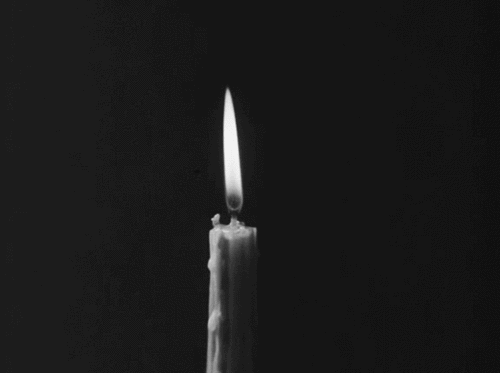
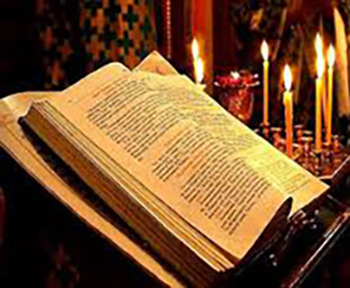
GALATIANS 2:6-10
2 Bear one another's burdens, and so fulfill the law of Christ. 3 For if anyone thinks himself to be something, when he is nothing, he deceives himself. 4 But let each one examine his own work, and then he will have rejoicing in himself alone, and not in another. 5 For each one shall bear his own load. 6 Let him who is taught the word share in all good things with him who teaches. 7 Do not be deceived, God is not mocked; for whatever a man sows, that he will also reap. 8 For he who sows to his flesh will of the flesh reap corruption, but he who sows to the Spirit will of the Spirit reap everlasting life. 9 And let us not grow weary while doing good, for in due season we shall reap if we do not lose heart. 10 Therefore, as we have opportunity, let us do good to all, especially to those who are of the household of faith.
MARK 7:14-24
14 When He had called all the multitude to Himself, He said to them, "Hear Me, everyone, and understand: 15 There is nothing that enters a man from outside which can defile him; but the things which come out of him, those are the things that defile a man. 16 If anyone has ears to hear, let him hear! 17 When He had entered a house away from the crowd, His disciples asked Him concerning the parable. 18 So He said to them, "Are you thus without understanding also? Do you not perceive that whatever enters a man from outside cannot defile him, 19 because it does not enter his heart but his stomach, and is eliminated, thus purifying all foods? 20 And He said, "What comes out of a man, that defiles a man. 21 For from within, out of the heart of men, proceed evil thoughts, adulteries, fornications, murders, 22 thefts, covetousness, wickedness, deceit, lewdness, an evil eye, blasphemy, pride, foolishness. 23 All these evil things come from within and defile a man. 24 From there He arose and went to the region of Tyre and Sidon. And He entered a house and wanted no one to know it, but He could not be hidden.
#orthodoxy#orthodoxchristianity#easternorthodoxchurch#originofchristianity#spirituality#holyscriptures#gospel#bible#wisdom#saints
0 notes
Photo









loona, group of visuals .:*・°☆. ☾ jinsoul ☽ .☆°・*:.
2K notes
·
View notes
Photo

Интересный букет для учителя на др! #lgov #цветывольгове #льгов #mircvetov46 #доставкацветовльгов #мирцветовльгов #цветыльгов (at Lgov) https://www.instagram.com/p/BxfqbkNh3ZR/?igshid=pm22rxk1rj88
0 notes
Text
Take action now! Russian Federation - Prisoner of conscience must be released
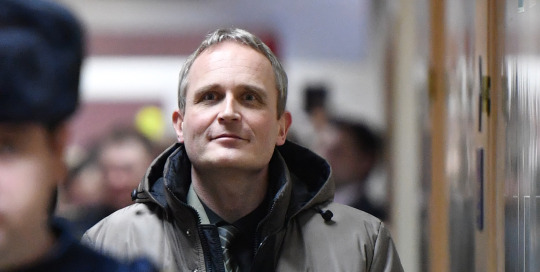
On 23 June, Jehovah’s Witness Dennis Christensen will have a parole hearing at the Lgov District Court, in western Russia.
Dennis Christensen, a Danish national living in Russia, was arrested in 2017 and prosecuted for peacefully exercising his right to freedom of religion. If the parole is not granted, he will be imprisoned until May 2022. He is a prisoner of conscience persecuted solely for his faith and must be released immediately and unconditionally.
Jehovah’s Witnesses have faced persecution and harassment in modern Russia since 2009, when a court in Rostov Region in southern Russia banned the local Jehovah’s Witnesses’ organization and declared 34 of their publications “extremist”. In subsequent years, several Jehovah’s Witnesses’ groups across Russia were pronounced “extremist” by local courts. Their prosecution was based on the vague definition of “extremism” in Russian law, in line with the growing practice of its vague application which increasingly targeted political, but also religious and other forms of dissent
On 23 May, Dennis Christensen transported to the correctional penal colony No 3 in Kursk region, some 200 km away from his home in Orel. There, Dennis Christensen has reportedly faced harassment by the penal colony administration, including via unsubstantiated reprimands for alleged regime violations. His previous applications for parole or easing of the regime have been rejected. Although Dennis has not fully recovered from a pneumonia he suffered at the end of 2019, the prison administration is not providing him with the adequate medical care he requires and has reportedly “lost” his medical file.
Take action now! - email, call, fax or Tweet the authorities in the Russian Federation and call for Dennis Christensen’s release
7 notes
·
View notes
Text
Commemoration List of departed clergy of the Moscow Patriarchate who have reposed as a result of the Coronavirus
Memory eternal.
Last Updated June 12, 2020
Deacon Alexander Gousev, (cleric of Holy Royal Martyrs Church in Sparks, NV) age 57, on April 9th
Archimandrite Nektary (Kovalenko; cleric of the Kiev Caves Lavra) age 73 on April 12th
Hierodeacon Naum (Fedyakin; cleric of the Kiev Caves Lavra) age 42 on April 13th
Priest Illya Gun (Longtime ROCOR cleric, particularly at the New Kursk Root Hermitage in Mahopac, NY) age 94 on April 15
Archpriest Alexander Ageykin, (rector of Holy Epiphany Diocesan Cathedral in Moscow) age 48 on April 21st
Archpriest Vladimir Veriga, (cleric of Holy Protection Convent in Khotkovo, Russia) age 70 on April 23rd
Protodeacon Eugene Trofimov, (cleric of Holy Epiphany Diocesan Cathedral in Moscow) age 61 on April 25th
Bishop Benjamin of Zhelesnogorsk & Lgov, age 54 on April 26th
Abbot Ignatius (Amelkovich; cleric of Holy Trinity-St. Sergius Lavra in Russia) age 75 on April 26th
Priest John Gorodinsky, (cleric of the Diocese of Ternopol (Ukraine) age 54 on April 27th
Hierodeacon Nikifor (Ovchinnikov; cleric of the Moscow Metochion of the Holy Transfiguration Solovets Monastery) age 55 on April 28th
Priest Gennady Butko, (cleric of the Diocese of Minsk), age 56 on April 29th
Archpriest George Breev, (rector of Nativity of the Mother of God Church in Krylatskoye (Moscow) age 83 on April 29th
Schema-Archimadrite Nikon (Deyev; cleric of Holy Trinity-St. Sergius Lavra) age 84 on April 29th
Archpriest Eugene Korchukov, (cleric of Holy Protection Convent in Khotkovo, Russia) age 65 on May 3rd
Deacon Andrey Molchanov, (cleric of Sts. Zosimas and Savvatey in Golyanovo, Russia) age 55 on May 3rd
Metropolitan Jonah (Karpuhin, former ruling bishop of the Diocese of Astrakhan & Kamyzyak) age 79 on May 4th
Archpriest Leonid Delikatny (rector of Holy Archangel Michael Church in Chernovtsy, Ukraine) age 49 on May 4th
Archpriest John Oleynik (cleric of the Diocese of Chernovtsy & Bukovina, Ukraine) on May 4th
Archpriest John Horoshevich (rector of St. Mary Magdalene Church in Minsk, Belarus) age 87 on May 6th
Abbot Tikhon (Barsukov; cleric of Holy Trinity-St. Sergius Lavra) age 65 on May 6th
Hiermonk Onesimus (Maltsev; cleric of the Moscow Metochion of the Optina Hermitage) age 57 on May 6th
Archimandrite Ambrose (Yurasov; spiritual father of the Entry of the Mother of God Convent in Ivanovo, Russia) age 81 on May 7th
Hierodeacon Dimitry (Nikolaev; cleric of St. Daniel’s Monastery in Moscow) age 49 on May 7th
Archimandrite Lawrence (Postnikov; cleric of Holy Trinity-St. Sergius Lavra in Russia) age 87 on May 8th
Hierodeacon Callistus (Kosulin; cleric of Holy Trinity-St. Sergius Lavra) age 57 on May 8th
Archpriest Vladimir Bushuyev (rector of Holy Protection Church in Izmaylovo, Moscow) age 67 on May 9th
Archpriest Alexander Voskoboinikov (rector Sts. Peter & Paul Church in St. Petersburg, Russia) age 59 on May 9th
Archimandrite Illian (Plemenyuk; cleric of Holy Trinity-St. Sergius Lavra) age 76 on May 11th
Schema-Archimandrite Raphael (Ivanov; cleric of Holy Trinity-St. Sergius Lavra) age 64 on May 12th
Archpriest Alexey Penkov (cleric of Holy Trinity Church in Konkovo, Moscow) age 52 on May 13th
Hieromonk Peter (Gribov, cleric of the Diocese of Shuisk, Russia) age 55 on May 13th
Archpriest Alexander Gridunov (cleric of Diocese of Vologdonsk) age 73 on May 13th
Archpriest Vasily Alexandrov (cleric of Holy Trinity Church in Moscow) age 45 on May 13th
Hieromonk Peter (Grinin; cleric of the Diocese of Shuisk) age 58 on May 13th
Archpriest Alexey Irodov (rector of St. Vladimir of Kiev Church in Vinnytsa, Ukraine) age 48 on May 14th
Hieromonk Modest (Panchenko; cleric of Holy Trinity-St. Sergius Lavra) age 45 on May 14th
Monk Siemon (Baiko; cleric of Novospassky Monastery in Moscow) age 68 on May 14th
Abbot Therapont (Appolonov; cleric of Holy Trinity-St. Sergius Lavra) on May 15th
Monk Onesimus (Smeliy; cleric of Holy Dormition Monastery in Novomoskovsk) age 63 on May 19th
Monk Pimen (Shuvayev;cleric of St. Nicholas Verkorturye Monastery) age 58 on May 22
Hierodeacon Polycarp (Sidorov; cleric of Holy Trinity-St. Sergius Lavra) age 63 on May 27
Metropolitan Barnabas of Cheboksary & Chuvashia, age 89 on June 1st
Archpriest Valery (Volkov, cleric of the Diocese of Serdobsk ), on June 2
Schema-Bishop Peter (Karpusyuk; vicar of the Diocese of Navahrudak - Belarus), age 61 on June 6
Archpriest Michael (Vasilyev; rector of rector of Dormition of the Mother of God Church in Moscow), age 64 on June 8
Priest Alexander (Maskanov; cleric of the Diocese of Kursk), age 52 on June 10.
May their memories be eternal!
1 note
·
View note
Video
youtube
JPARLE PAS TROP GROS JFAIS LES LOVES MONEYCALL JREPOND ALLO YA MES ENNEMIS DANS LCOFFRE CHUI DANS LGOV YA TOUT MES POTES TOUT LES JOURS ELLE VEUT LA DOPE JVEUX LA VILLA SUR LA COTE DANS CETTE CHAMBRE YA QUTOI ET MOI JMELANGE TOUT LES ELEMENTS
2 notes
·
View notes
Video
I give up this kids just won #halloween with these #halloweencostume #chileandthechampshow #thechile https://www.instagram.com/p/BpVZh4-lGOV/?utm_source=ig_tumblr_share&igshid=1rdd1rw1o4045
3 notes
·
View notes
Photo
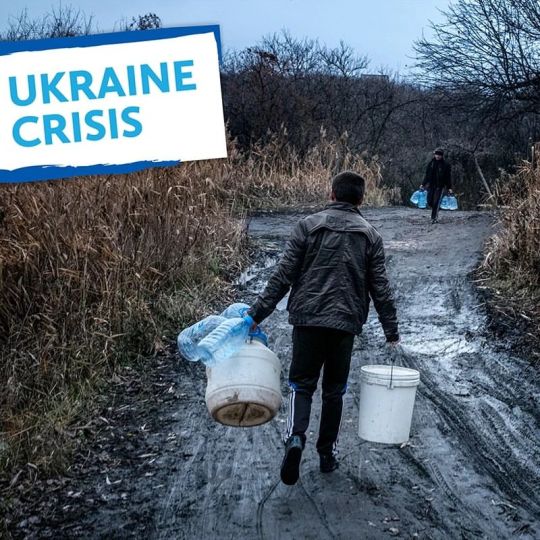
Officials in Chernihiv said they were now running out of drinkable water, in a grim forewarning of a humanitarian disaster to match that of the flattened port of Mariupol, in the south-east of the country, from where 100,000 people are struggling to flee. “The number of tanks for drinking water is limited,” Chernihiv officials said in a warning to civilians on Wednesday. “Due to this, in order to protect the population of the city, starting from [Thursday] restrictions are imposed on the distribution of drinking water. Water will be poured in the amount of 10 litres per person.” Lyudmila Denisova, Ukraine’s human rights ombudsman, claimed that the population was being held hostage, with the Ukrainian government fearful that the Kremlin is seeking to push its “maximalist” demands in the current peace negotiations with Kyiv by ratcheting up the targeting of civilians. Denisova said: “Today Chernihiv remains completely cut off from the capital. The occupiers bombed the bridge across the River Desna, through which we transported humanitarian aid to the city and evacuated civilians. “The city has no electricity, water, heat and almost no gas, infrastructure is destroyed. According to local residents, the occupiers are compiling lists of civilians for the ‘evacuation’ to Lgov [in the Kursk region of Russia]. The racists, cutting off Chernihiv from the capital, turned its inhabitants into hostages.”#ukraine #russia #usa #poland #europe #eu #india #sudamerica #africa #asia #water https://www.instagram.com/p/Cbd4HaBL0ga/?utm_medium=tumblr
0 notes
Photo

Curiosos? Vem dar uma espiadinha, já já. https://www.enjoei.com.br/@lojinhanife https://www.instagram.com/p/CVLx7h-lGOV/?utm_medium=tumblr
0 notes
Text
PROYEK LANDORC (Platform yang Menjembatani Pendanaan Real-estate Dengan Solusi Crypto)
Jumat, 24 september 2021
PENDAHULUAN
Pinjaman Crypto adalah platform pinjaman yang memanfaatkan teknologi blockchain untuk menciptakan platform pinjaman yang aman dan tersedia untuk semua orang. Sistem crypto lending memungkinkan setiap orang di dunia untuk dapat meminjamkan aset digitalnya kepada orang-orang yang membutuhkan pinjaman dengan agunan, nantinya peminjam akan mendapatkan keuntungan melalui bunga yang dijanjikan oleh peminjam. Platform pinjaman kripto cukup penting, terutama di sektor real estat karena pengguna dapat mengubah aset properti mereka menjadi token dan menawarkannya kepada pengguna kripto. Nantinya pengguna crypto akan dapat membeli token ini dan mendapatkan keuntungan melalui peningkatan bunga dan harga aset.
Platform Crypto lending khususnya di sektor real estate semakin meningkat, hal ini dikarenakan semakin banyak masyarakat yang sadar bahwa real estate merupakan salah satu sektor yang berpotensi untuk berkembang. Melihat hal tersebut, LandOrc ingin meluncurkan platform pinjaman agunan yang akan fokus pada sektor real estate. LandOrc berencana untuk menjembatani kesenjangan dalam pendanaan real estat dengan menyediakan platform pinjaman agunan yang dapat diakses oleh orang-orang di seluruh dunia. Dengan cara ini, pengguna dapat mengonversi sertifikat tanah menjadi token NFT dan menawarkannya kepada pengguna lain.
Real Estat dan Blockchain
Kebutuhan pendanaan real estate belakangan ini cenderung meningkat. Ini semua karena berbagai faktor, seperti kebutuhan uang segar, modal, dan banyak faktor lainnya. Jika kita melihat data, sistem perbankan saat ini tidak cukup untuk menangani permintaan nasabah dan khususnya, sangat tidak mudah untuk mengajukan pendanaan bank. Untuk itulah LandOrc diluncurkan untuk dapat memfasilitasi kebutuhan pelanggan terkait pendanaan real estate. LandOrc menawarkan keamanan, transparansi, dan memungkinkan sektor real estat berkembang melalui teknologi blockchain yang revolusioner. Di sini pengguna dapat mengonversi konversi sertifikat tanah menjadi token NFT. Karena seperti diketahui, token NFT merupakan protokol yang aman untuk dapat mengamankan hak kepemilikan dan tidak memungkinkan adanya manipulasi. Oleh karena itu, dengan cara ini, pengguna dapat menawarkan token NFT mereka kepada pengguna lain,
Terletak di Uni Emirat Arab, LandOrc didukung oleh tim profesional dan berpengalaman di pasar crypto dan real estat. Berbagai permasalahan terkait operasional LandOrc telah dipikirkan matang-matang, sehingga tim LandOrc cukup optimis LandOrc dapat memberikan layanan yang dapat diandalkan pengguna.
LAYANAN LANDORC
LandOrc adalah platform pendanaan real estat yang memanfaatkan teknologi blockchain. Dengan fitur yang ditawarkan oleh LandOrc memungkinkan pengguna yang merupakan pemilik tanah dapat mendigitalkan kepemilikan tanah atau sertifikat properti dengan token NFT dan menawarkannya kepada pengguna lain. Nantinya, LandOrc akan bekerja sama dengan penasihat hukum, penilai profesional dan entitas lokal terkait untuk dapat melakukan evaluasi dan persyaratan lain untuk aset pengguna. Tapi bukan itu saja,
ada beberapa fitur lain dari LandOrc:
-Pembiayaan Lorc: Platform pembiayaan yang diluncurkan oleh LandOrc untuk memfasilitasi permintaan pengembang real estat atau pemilik tanah yang ingin mengumpulkan dana untuk berbagai kebutuhan mereka. Nantinya pengembang real estate atau pemilik tanah hanya perlu menyediakan agunan untuk mengajukan pinjaman.
-Staking: Pemilik tanah dan investor dapat mempertaruhkan token LandOrc untuk mendapatkan penghasilan pasif. Nantinya hadiah akan didukung oleh bunga dari Lorc Financing.
-Konversi Crypto-to-Fiat: LandOrc menyediakan sistem yang memungkinkan LORC yang dikeluarkan untuk dikonversi ke fiat untuk dana segar.
Tokenomics
LandOrc memiliki 3 token asli yang diluncurkan dengan nama LandNFT, LORC, dan LGOV. Ketiga token ini akan diluncurkan di jaringan Ethereum dan memiliki fungsi yang berbeda, seperti LandNFT adalah token NFT berbasis ERC-721 yang akan mewakili sertifikat tanah, LORC adalah token berbasis ERC-20 yang akan berfungsi sebagai staking dan reward di LandOrc platform, dan LGOV adalah token tata kelola yang memungkinkan pemegangnya untuk berpartisipasi dalam platform tata kelola. Untuk bisa mendapatkan ketiga token tersebut, pengguna bisa membelinya di exchange yang disediakan oleh LandOrc.
KESIMPULAN
Perbankan tradisional saat ini tidak cukup mampu menangani kebutuhan masyarakat akan pembiayaan real estate, juga tidak cukup mudah untuk mengajukan pembiayaan real estate ke bank karena persyaratannya yang cukup rumit. Dan LandOrc hadir sebagai platform yang akan menjembatani pendanaan real estate dengan solusi pinjaman agunan. LandOrc memanfaatkan teknologi blockchain untuk dapat menghadirkan layanan pembiayaan real estate modern dan inovatif yang akan memfasilitasi berbagai kebutuhan pengguna. Di sini pengguna dapat mendigitalkan kepemilikan tanah ke token NFT dan menawarkannya kepada pengguna, dan investor dapat berinvestasi lebih menguntungkan di LandOrc. LandOrc bermaksud untuk menjadi platform pendanaan real estat yang inovatif dengan memanfaatkan teknologi blockchain, sehingga memberikan keamanan, transparansi, dan memungkinkan industri real estat untuk terus tumbuh.
LINK INFORMASI TENTANG LANDORC
-WEB: https://landorc.io/
-TWITTER: https://twitter.com/LandOrc1
-TELEGRAM: https://t.me/joinchat/ECZFCDv8DPY0ODk1
-FACEBOOK: https://www.facebook.com/LandOrc.io/
Penulis: Moella
Profil: https://bitcointalk.org/index.php?action=profile
Dompet: 0x1FcDf257656572C78DA201b2075E440567318985
0 notes
Text
LandOrc — The Layman Story (Part 4)

Technology Behind LandOrc
LandOrc’s technology stack is currently built on the Ethereum blockchain and the platform mechanism is powered by the following three distinctive tokens as we introduced in our previous part:
1. Land NFT Tokens (“LandNFT”)
2. LandOrc Tokens (“LORC”) [pssst…check out their pioneer sales @https://landorc.io/ ending on 29th August 2021, without vesting, and get additional 10%]
3. Land Governance Tokens (“LGOV”)
In addition to the above, do note that you came across terms like Blockchain, Ethereum Blockchain, smart contracts and digital assets. Even before diving into LandOrc’s technology, one has to understand or grasp the basics of these terms. But have no fear as we are not going to explain them with those technological jargons. Go on reading and you might find it interesting.
Blockchain Technology
For many, Blockchain is Bitcoin and Bitcoin is Blockchain i.e., Blockchain is cryptocurrency. It’s funny that people want to but crypto but do not understand the basics. This has led to a lot of losses for many crypto investors.
So, what exactly is Blockchain Technology (BT)? Well, it’s just a software that can be used for many applications and one of them is being cryptocurrency. In layman’s term Blockchain is an ever-growing, secure, shared record keeping system in which each user of the data holds a copy of the records, which can only be updated if all parties involved in a transaction agree to update. To simplify further, it’s like a ledger where your crypto or financial transactions are kept or recorded and it’s secure. For a bank transaction you can check your records online. It’s very similar.
Just imagine a story book. You have the pages, title, page numbers and the contents or entries. You go page by page to read a story. Just like the pages in the book you have blocks in Blockchain. Each block will have the financial transaction (cryptocurrency) in it just like content on every page. It’s time stamped too. Exactly like banking records. These ledgers or blocks are arranged one after the other just like a chain, hence the name blockchain. These financial transactions are verified by thousands of computers or computing machines that we call as miners. Assuming you tear off a few pages in the story book, you won’t be able to read the complete story. The book becomes redundant. Similarly, if a hacker wants to change an information in the block transaction than that particular chain becomes redundant or probably that miner will be rejected by other miners.
Imagine these blocks are like blocks to build a house. For example, a 3-story house. Each floor has got 6 blocks arranged one after the other. In total 18 blocks. If a person wants to remove and replace block no.9 than he will have to start removing from block no.18 and downwards until he reaches block no.9. Replace it and rebuild from no.10 onwards until no.18 again. This is going to cost him a lot of energy and waste of time and money. Consider the person here as the hacker and the blocks are in blockchain. In public Blockchains (like Bitcoin and Ethereum), more complex algorithms are required to avoid malicious activities. Since each block is built on top of the previous Block, the immutability has been achieved. Here immutability means, very difficult to fake/alter a block & very easy to detect the tampering. We did mention in the beginning that LandOrc’s technology stack is currently built on the Ethereum blockchain.
So, we have internet and BT works on top of it. The blockchain is the decentralized transparent ledger with the transaction records — the database that is shared by all network nodes, updated by miners, monitored by everyone, and owned and controlled by no one. It is like a giant interactive spreadsheet that everyone has access to and updates and confirms that the digital transactions transferring funds are unique. Above BT is the protocol (like rules that tells what to do. Network has to follow this rule to successfully transmit data) — more like the software system that transfers the money over the blockchain ledger. Then, the top layer is the currency itself, Bitcoin, which is denoted as BTC or Ethereum denoted as ETH when traded in transactions or exchanges. We call it the technology stack. Keep it at the back of your mind as we might refer back to this again in the future.
Layer 3 — Currency (crypto)
Layer 2 — Protocol
Layer 1 — Blockchain Technology
We have used the simplest style to explain about BT. Can you imagine reading it with technological jargons? One of the reasons many do not want to delve into getting the knowledge. Hope this simplified version helps. Tomorrow we will get into Ethereum Blockchain. So, stay tuned.
If you’d like to learn more about LandOrc, please visit the projects below
Website: https://landorc.io/
Telegram: https://t.me/landorc
Twitter: https://twitter.com/LandOrc1
Facebook: https://www.facebook.com/LandOrc.io/
Instagram: https://www.instagram.com/landorc.io/
Reddit: https://www.reddit.com/r/LandOrc/
author
Bitcointalk username: suyati66
Bitcointalk profile: https://bitcointalk.org/index.php?action=profile;u=2632393
Eth Wallet address:0x07C6F0a2dAC7c65336187aE356f1A7da302e3c50
0 notes
Photo









loona, group of visuals .:*・°☆. ☾ choerry ☽ .☆°・*:.
#femaleidolsedit#my stuff#my gifs#loona#choerry#lgov#hewwo and im back#u can see in this series how darker my gifs get progressively lol#also cos the more we go the less cf/etc content we have sigh
582 notes
·
View notes
Photo

17 мая поставка шикарных гортензий! Успейте купить воздушное облако! #lgov #цветывольгове #льгов #mircvetov46 #доставкацветовльгов #мирцветовльгов #цветыльгов (at Lgov) https://www.instagram.com/p/BxfmORUozww/?igshid=14llfpu3llz51
0 notes
Text
LandOrc
Bridging the Real Estate Funding Gap via Collateralised Lending

What is the LandOrc about ?
LandOrc is the blockchain enabled ecosystem that allows seamless movement of capital and collateral between investors, property developers and land title owners.
Providing security, transparency and enabling the growth of the real estate industry through lower cost of capital. Converting land titles into Non Fungible Tokens (NFT) allows for ease of tracking transactions and the process of using them as a collateral. The LandOrc platform integrates data both on-chain and off-chain, including data linked to location, vicinity and visuals of the land via oracles integrated to the chain. Using the principles of Decentralized Finance (DeFi) Digital Asset Owner can participate in the global real estate projects with active returns and security of land based collateral.
Headquartered out of the United Arab Emirates and with technology and operations teams spread across multiple geographies.
LandOrc uses an operating model involving special purpose vehicles (SPV) domiciled within each of the operating markets. This ensures that the process of lending and managing collaterals are done within the legal framework of the jurisdiction.
What's in it for the Investor?
A large portion of Digital Asset Owners are looking for longer term gains, reflected in the 99% of Ethereum wallets that are not invested in higher risk DeFi transactions. Investors have an opportunity to participate in the global real estate industry from a single platform gaining attractive staking reward while having the security of land as collateral. With all transactions on the Blockchain, Digital Asset Owner benefit from transparency and security.

What's in it for the Landowner?
Property developers are challenged in terms of raising capital, especially those operating in high staking reward geographies. The recent pandemic has put greater pressure on banks and other conventional sources. Access to capital at a lower staking reward rate would reduce cost of financing and increase profits. The blockchain based solution ensures that the financing process is secure and faster than the conventional solutions.

Technology behind LandOrc
LandOrc’s technology stack is built on Ethereum blockchain, with three distinctive tokens operating.
Land NFT Tokens (LandNFT)
Non-Fungible Token, based on the ERC-721 standard of Ethereum. It represents a digital form of the land title. LandNFT enables storage of verified data and eases property transaction and collateralisation via trackable movement across wallets on the blockchain.
LandOrc Tokens (LORC)
Utility token based on ERC20 standard provides Digital Asset Owners the means for staking on property development projects available on LandOrc platform. Using smart contracts to provide assured staking rewards over the defined period and with an underlying land title collateral available via NFT.
Land Governance Tokens (LGOV)
LGOV allow members of the LandOrc ecosystem – property developer, lawyers, valuers, Digital Asset owners and technology partners to vote on key decisions on the platform. Distributed proportionately across members with specific allocated voting rights and multi signature wallet for independent valuers and legal counsels, to ensure adequate oversight. Minimum threshold vote amongst all issued LGOV tokens is needed to allow a property development project to be made available for staking on the plaform.
Meet Our Great Teams
The team at LandOrc bring extensive experiences across relevant industry verticals and expertise. The multinational team ensures diversity in approaches and ideas.
Damodharan V: Chief Executive Officer, Global operations
Daniel: Advisor, Marketing
Greg Duffell: Advisor, Market Entry, SEA
Peng Yew (PY): Advisor, Real Estate Industry
Manoharan S: Chief Executive Officer, India operations
Jason LIM: Senior Data Analyst (Real Estate)
Suresh Naidu: Advisor, Innovation & Communication
Prakash Mathavan: Advisor, Finance Management
Sree Murthi: Chief Technology Officer
Navonil Roy: Principal Advisor
Nick Low: Advisor, Technology
Herdetya: Design & Dev
Ahmad: Animator
Andra Ann: Project Coordinator
Praveena Premakumar: Senior Manager Operations
Mirza Mahfuza: Project Management
For more information please follow the link below:
https://landorc.io/index.html
https://www.facebook.com/LandOrc.io/
https://twitter.com/LandOrc1
https://www.linkedin.com/in/landorc
https://landorc.medium.com/
https://www.reddit.com/r/LandOrc/
https://www.instagram.com/landorc.io/
Forum Username: Thelagend jz4
Forum Profile Link: https://bitcointalk.org/index.php?action=profile;u=2577207
ETH Address: 0x45365defCa88A8c888e9A67F57e0c315f2B1e5F2
1 note
·
View note